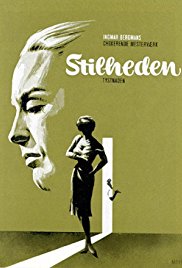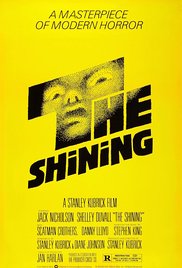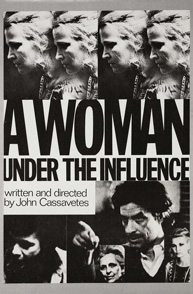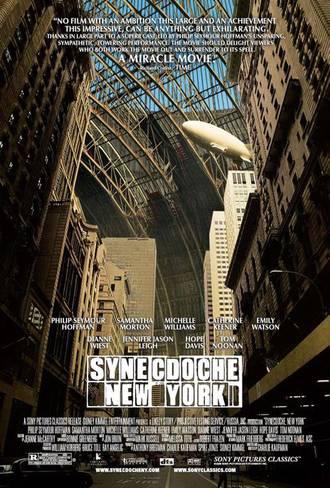Hallways and forever: Bergman, Kubrick and the unforgettable drama of a roaming boy
“The Silence” is not the most famous of Ingmar Bergman’s films. Released in 1963, it was said by the director to be the last of a loosely linked trilogy examining the nature of God. The subject matter is perplexing and depressing. The moviemaking is gargantuan.
Elite directors find greatness. Perhaps sometimes greatness finds them. The most unlikely revelation of “The Silence” is the drama of a bored boy roaming the halls of an old, empty hotel, hiding around those tall, rigid corners and doors, a few curious people scattered about. The world nearly two decades later would see this type of treatment unleashed ferociously in “The Shining,” Stanley Kubrick’s mass-market treatment of the Stephen King novel.
Kubrick’s images of little Danny riding his Big Wheel-esque toy, some of the most haunting in cinema, are the ones that linger in public consciousness to this day. Bergman’s perceived groundbreaking contribution in “The Silence” was the introduction of controversial nudity and taboo sexual content, credited for making the film an unlikely box-office hit and likely attracting many who had no grasp of the brilliance they were witnessing. Bergman’s stars here are not his most famous, Gunnel Lindblom and Ingrid Thulin. Much of Kubrick’s game plan in “The Shining” is letting Jack be Jack, achieving the most famous shot ever of Nicholson. While Kubrick festoons his scenes with knives and blood and ghosts, Bergman garnishes his with a debilitating rivalry, taking place amid exquisite lighting and elaborate mirror and window and moving-train shots. The success of “The Shining” proves Bergman would have ranked among the greatest horror masters had he only tried.
Bergman and Kubrick have been deceased for many years. Both directors have been enormously studied and scrutinized by the critic community. Roger Ebert put “The Silence” and “The Shining” in his “Great Movies” collection and does not mention a connection between the films in either review. No one in “The Silence” is seeing ghosts, but the films share a few remarkable similarities: struggling family units of three, with a small, innocent boy caught in the middle, stuck in an old hotel in unfamiliar territory with very limited ability to communicate with the outside world. The characters they encounter in the hotel seem from two or three generations past but somehow relate better with the family members than the family members do with each other. The boy in each film is not the drama, but his movement is the gasoline for the suspense.
“The Silence” has some of the look and feel of the works of Fellini and Antonioni. But there is in Ester a type of despair undeniably Bergman-esque and generally absent from the most renowned films of those Italian masters. Between Ester and Anna, we see a clash of hedonism. Anna has concluded that Ester’s perceived moral superiority is artificial and a crutch. Anna has witnessed Ester decline physically while Ester attempts, professionally, to connect human beings on a distant, academic level. Anna, though, feels good. She is all about life’s physical connections, which presumably compels her to seek out one-night stands and perhaps alarm those who don’t believe a 10-year-old boy should be scrubbing his mother’s back in the tub or sleeping next to her while she’s nude.
It seems as if Bergman is exploring balance, and “The Silence” is what happens when balance gets out of whack.
We can see that Anna and Ester have rarely attempted perhaps life’s greatest therapy — talking, a concept put to extreme test in “Persona,” Bergman’s avant garde opus of a few years later with muses Liv Ullmann and Bibi Andersson. With remarkably limited backstory in “The Silence,” Bergman refuses to tell us what happened between these two sisters, where they were going and why they were going there. “The Silence” at times feels like the precursor to “Persona.” Both involve the frustrations of a woman’s yin and yang, one of them not healthy, the other free to invoke libido. “Persona” bears a loose — extremely loose — comparison/contrast with Truffaut’s later “Day for Night.” Each is a movie within a movie; the difference is that in “Day for Night,” a nod to moviemaking, the shell is the real film. “Persona” mystifies all who see it. It’s a tribute to cinematography and the highest form of visuals, some of the most powerful images ever seen in film, several associated with a stalking Liv Ullmann in black.
“The Shining” is a fright fest but so well done, it must rank among the greatest works of horror. Kubrick’s scenes got attention not for censor concerns but their devastating suspense. There are ghosts, telepathy and madness, and the goal is not to reconcile but get out, but the scariest moments involve a boy riding a toy in an empty hallway and two girls appearing. These scenes, like Bergman’s, are masterworks of cinema and signature of an auteur. This analysis will not say that Kubrick borrowed from Bergman, only that each was extremely capable of getting to the same place.
4 stars
4 stars
4 stars
(February 2018)
“Persona” (1966) (cast)
Directed by: Ingmar Bergman
Written by: Ingmar Bergman
Cinematography: Sven Nykvist
Editing: Ulla Ryghe
“The Silence” (1963) (cast)
Directed by: Ingmar Bergman
Written by: Ingmar Bergman
Cinematography: Sven Nykvist
Editing: Ulla Ryghe
“The Shining” (1980) (cast)
Directed by: Stanley Kubrick
Written by: Stephen King, Stanley Kubrick, Diane Johnson
Cinematography: John Alcott
Editing: Ray Lovejoy





